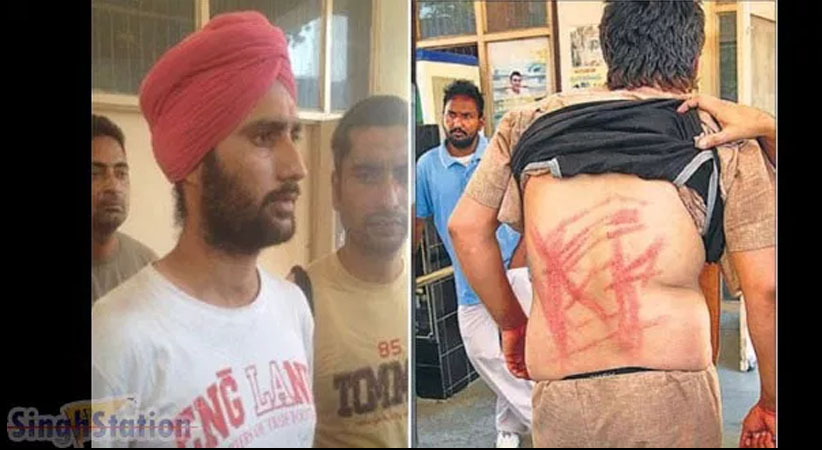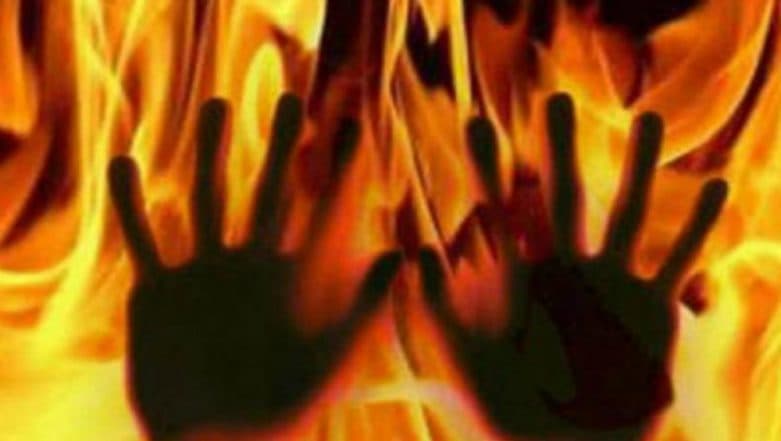NEWS & MEDIA
NEWS & MEDIA
INDIA | Uttar Pradesh | New Delhi | 2020-01-02As India Violence Gets Worse, Police Are Accused of Abusing Muslims | NYT


As demonstrations over a citizenship law sweep India, more accounts are emerging of mistreatment and harsh tactics by police and state officials.

Credit...Saumya Khandelwal for The New York Times)
NAGINA, India — The teens were trapped!
As the protest broke up, Indian police officers in the town of Nagina chased a group of Muslim teenagers into an empty house. They grabbed them and took them to a makeshift jail. And then, the boys and community leaders said, the officers tortured them.
Four of the boys, who ranged in age from 13 to 17, said in interviews with The New York Times that police officers used wooden canes to beat them and threatened to kill them for taking part in demonstrations against a divisive citizenship law that has fueled rallies and rioting across India. Three had obvious signs of deep bruising or other injuries.
Many Indians fear that the new law, which is seen as a huge political victory for Prime Minister Narendra Modi and his Hindu nationalist base, is blatantly discriminatory toward Muslims and threatens the very foundation of India as a secular and tolerant nation.
In Uttar Pradesh, the northern Indian state where Nagina is and the one with the most Muslim residents, the rioting has been among the most intense, and the violent backlash from the police has been the most deadly and troubling.
According to accounts by the detained boys in Nagina, along with family members and other officials in their town who spoke to them immediately after they were released, police officers over the course of 30 hours terrorized them and others who had been demonstrating on Dec. 20.
Police officials in the town deny that any abuse happened, or that minors had been detained at all around that time.
According to two of the boys, the officers laughed during beatings, saying, “You will die in this prison.”
“They were so scared that hardly anyone could speak,” said Khalil-ur-Rehman, a municipal officer in Nagina who met the children at a police station as soon as they were released on Dec. 22. “How do you justify detaining minors, let alone beating them black and blue?”
As the Indian authorities struggle to contain the nationwide protests, more accounts are emerging of abuse meted out by police officers.

According to interviews with more than three dozen people in several Uttar Pradesh towns, almost all the violence has been directed toward Muslim residents. More people — at least 19 — have been killed in this state during the protests than anywhere else in India.
Witnesses said that police officers opened fire on demonstrators with live ammunition, broke into houses and stole money, and threatened to rape women.
The BBC aired footage showing police officers knocking down security cameras in a Muslim neighborhood and shattering the windows of parked cars.
The Indian news media has reported that Uttar Pradesh police officers were encouraged by their superiors to kill protesters engaged in violence, but that innocent people were also targeted.
In one case, officers smacked a 72-year-old Muslim man with a rifle butt, telling him:
“Muslims have only two places: Pakistan or the graveyard.”
Harsh Mander, a human-rights activist who formerly worked in India’s civil service, said he visited homes resembling “wastelands,” where the police had destroyed kitchens, smashed television sets and threatened to seize property. He said the authorities had interpreted the citizenship law as giving them license to force Muslims into neighboring Pakistan and, as they see it, “settle the unfinished business of Partition.”
“The police have become a lynch mob,” he said.
Police and state officials have denied using excessive force or singling out Muslims. They have emphasized the need to preserve order and protect innocent people against “radical groups” with “deep-rooted conspiracies” to commit violent acts.
“The kind of action the government is taking against rioters has become an example for the entire country,” read a Friday tweet from the office of Yogi Adityanath, Uttar Pradesh’s chief minister and a close ally of Mr. Modi.
But many residents accuse Uttar Pradesh officials of mounting an organized campaign to terrify Muslims into submission.
The new citizenship bill, which creates a special path for non-Muslim migrants in India to receive citizenship, has provoked the biggest backlash Mr. Modi has faced since becoming prime minister in 2014.

, 2019. Credit...Saumya Khandelwal for The New York Times)
In Uttar Pradesh, where destructive riots erupted and protesters vandalized property, there is a growing number of accounts of police officers having been given the green light by senior officials to use harsh measures.
In an audio recording that some residents and officials say features the voice of Sanjeev Tyagi, the superintendent of police in the Bijnor district, which includes Nagina, a man orders police officers to “break the arms and legs of those throwing stones at police stations.”
“Go and fix them,” he said.
Mr. Tyagi looked surprised and a bit disturbed when asked, during an interview with The New York Times, about this recording. He declined to say whether his was the voice on the recording, which one officer, who spoke on condition of anonymity to avoid reprisals, said had been radioed out to the police force. Since then it has been widely shared on social media.
After India’s Parliament passed the Citizenship Amendment Act on Dec. 11, hundreds of thousands of protesters poured into the streets in many cities across the country to oppose the law, which favors every major South Asian faith over Islam.
Mr. Modi has defended the law, saying that it would not strip citizenship from India’s Muslims and that it was intended to help religious minorities fleeing persecution in neighboring Muslim-majority countries. He said those protesting the bill were “spreading lies.”
On Dec. 19, Mr. Adityanath, a monk and staunch Hindu nationalist, publicly urged the state police to “take revenge” on protesters who were vandalizing public property. Mr. Adityanath has called Muslims “a crop of two-legged animals that has to be stopped.” During his tenure as chief minister, the state police have killed dozens of suspects in altercations known in India as police “encounters.”
On the afternoon of Dec. 20, as Friday Prayer ended and people began to hit the streets across Uttar Pradesh to protest the citizenship bill, violence exploded in several towns at the same time. Thousands of officers were deployed.
At the Jama mosque in Nagina, protesters soon found themselves surrounded by the police. More than a hundred were detained and bused to an empty badminton court, where they were beaten with bamboo canes, witnesses said.

Credit...Saumya Khandelwal for The New York Times)
At least 21 teenagers were among the group, according to the four boys who were interviewed. Adult family members were with them during the interviews.
One of the detainees, a 15-year-old boy who showed reporters deep bruises on his leg, said police officers seemed most provoked by those who did not initially cry.
“Everyone was screaming,” said the boy, whose identity is being withheld because he is a minor and fears punishment by officials. “They forced us to drink bottles of water and then they would beat us when we asked to go to the bathroom.”
Another detainee, a 16-year-old with a bandaged hand that he believed had been broken, said that a few police officers had tried to stop the abuse but were outnumbered. He said officers seemed to enjoy depriving them of sleep and making them cold.
In the interview, Mr. Tyagi, the police superintendent for the Bijnor district, denied that minors were among the people detained then, calling those reports “totally baseless.”
Mr. Tyagi stated that protesters in Nagina had gotten out of control, posing a risk. He shared videos that showed protesters rampaging in Bijnor’s business district, breaking store windows and vandalizing a vehicle that he said belonged to a Hindu man. Police officials said that at least 288 officers statewide were injured, including 61 from gunshot wounds.
“We were worried that Hindus and Muslims were about to fight each other,” Mr. Tyagi said, pointing to the state’s long, bloody history of such riots.
Many of these towns are now filled with grief. The family of Mohammed Suleman, a young man fatally shot in a protest on Dec. 20, still can’t believe he is gone.

Credit...Saumya Khandelwal for The New York Times)
Sitting in Mr. Suleman’s bedroom, a concrete shell filled with books, Mr. Suleman’s uncle, Anwar Usmani, broke down as he spoke about the boy, who he said woke up every day at 5 a.m. to study for the Indian civil service exam.
“He wanted to serve the country that killed him,” Mr. Usmani said.
Mr. Suleman’s family said that they had to beg police officials to give back his body after their vehicle was stopped on their way back home to the town of Nehtaur from a nearby city, where they had sought a doctor to try to save him.
Family members who had been in the vehicle said that Mahaveer Singh Rajawat, a law enforcement official for Nehtaur, pointed a gun at their chests and told them: “Behave and be silent, or I will declare that those who died were terrorists!”
Family members who had been in the vehicle said that Mahaveer Singh Rajawat, a law enforcement official for Nehtaur, pointed a gun at their chests and told them: “Behave and be silent, or I will declare that those who died were terrorists!” Mr. Suleman’s body was returned to them, but they were threatened by the police not to try to rouse public sympathy by publicly displaying it.
When asked about this during an interview with The Times, Mr. Rajawat abruptly left his office and drove away in a jeep. Mr. Tyagi, the superintendent of police, said he was not aware of these accusations.
Surrounded by mourning women, Mr. Suleman’s mother, Akbari Khatoon, rocked on her bed and wailed.
“The police killed him in cold blood,” she said, “and that is what the world should know.”

Credit...Saumya Khandelwal for The New York Times)
Saumya Khandelwal contributed reporting from Nagina, and Hari Kumar from New Delhi.
Kai Schultz is a reporter in the South Asia bureau, based in New Delhi. He has reported from five countries in the region and previously lived in Kathmandu, Nepal.
The New York Times
Link to Source: https://www.nytimes.com/2020/01/02/world/asia/india-protests-police-muslims.html




